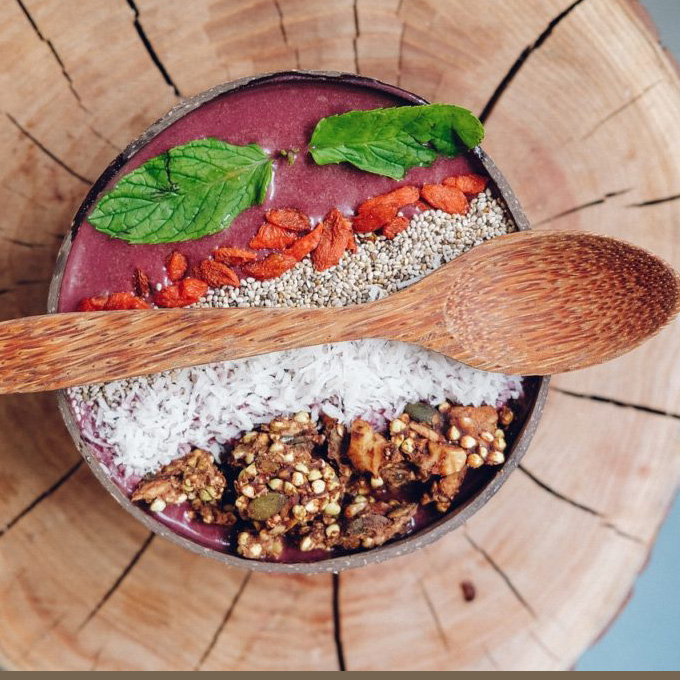
Chia Who? – The Superfood Trend
“I have a green smoothie every morning with chia seeds and acai berries, you should try it too! I feel so fit and healthy!” Have you ever heard this or a similar sentence in your life? In recent years, more and more people have been talking about superfoods. There are many new restaurants with superfoods on the menu and a sharp increase in coverage of superfoods in beauty, health and nutrition magazines. Increasing concerns about health and aging society appear to be an important driver of the superfood trend in Europe, as a rapid rise in new products enters a dynamic and growing market. Every season, new products are introduced and advertised as superfoods. The United States is in first place at importing goods labeled as superfood, Germany ranks second [1].
But what are superfoods exactly and what makes it so “super” and different from functional food?
Superfood can be defined as food that is considered particularly nutritious and energy-dense. Foods that fall into this category include chia seeds, acai berries, blueberries, beetroot, soy, pomegranates, green tea, goji berries, coconut oil, salmon, dark chocolate, cocoa and kale [2]. Some of these superfoods, like chia seeds or goji berries, have turned into established products that can be obtained in almost every supermarket or even in discounters. Among the superfoods, goji is the leading superfood product. “Goji” is the generic name for different plant species from the genus lycium [2]. However, superfood is neither a registered trademark nor a legally protected term. All definitions have in common that they describe superfoods as a food that has a high nutrient density. This means a comparatively high amount of e.g. proteins, vitamins, minerals, polyunsaturated fatty acids, phytochemicals, and antioxidants. The problem is, however, that many of these products are extremely damaged by pollutants that can have even negative effects on our health. Also, they usually have long transport routes behind them, which is not only bad for the climate but can also decrease the nutrient density.
What’s the conclusion and the recommendation?
Overall, superfoods are a good thing, but superfoods should not emphasize some single representatives or nutrients, because the variety and complexity of the entire nutrition are important for a healthy lifestyle. In addition, it depends on the lifestyle in general, so a lot of exercise, sufficient sleep, social contacts and a positive attitude to your life are key [3]. A healthy diet with a lot of fruits and vegetables has not only positive effects on your physical health; it also has a significant influence on your psychological well-being. Therefore, it is not only worthwhile for your body but also for the mind to significantly increase your personal fruit and vegetable consumption. It is crucial that your diet includes essential vitamins and nutrients which can help in relieving symptoms of depression, mood disorders, and other mental illnesses [4].
For some, lifestyle might be considered more important than sustainability at this point, because many local products like blackberries, linseeds, or peppers offer the same high vitamin content as superfoods, but do not have the wonderful image of superfood. Thus, if you want to buy superfoods like goji berries or chia seeds, it makes sense to buy certified organic products. They are manufactured without the use of chemical pesticides and fertilizers. The Fairtrade seal is also a guarantee of more sustainability for products from distant countries. And don’t forget that agriculture in Germany and Europe also has many local “superfoods” to offer. Flax seeds, for example, are a really good alternative to chia seeds because they have similar “slime forming” properties.
Certainly, the trendy superfood products have many beneficial properties for our health. But the native fields provide all the vitamins that you need, too, often at a much lower price. For a healthy diet, berries (for example) are not required. Those who eat a varied and balanced diet can do it also with local fruits and vegetables. It is worthwhile in many ways to look for fresh, seasonal and organically grown fruits and vegetables on the market! And anyway – self harvested “superfood” tastes the best! [5].
